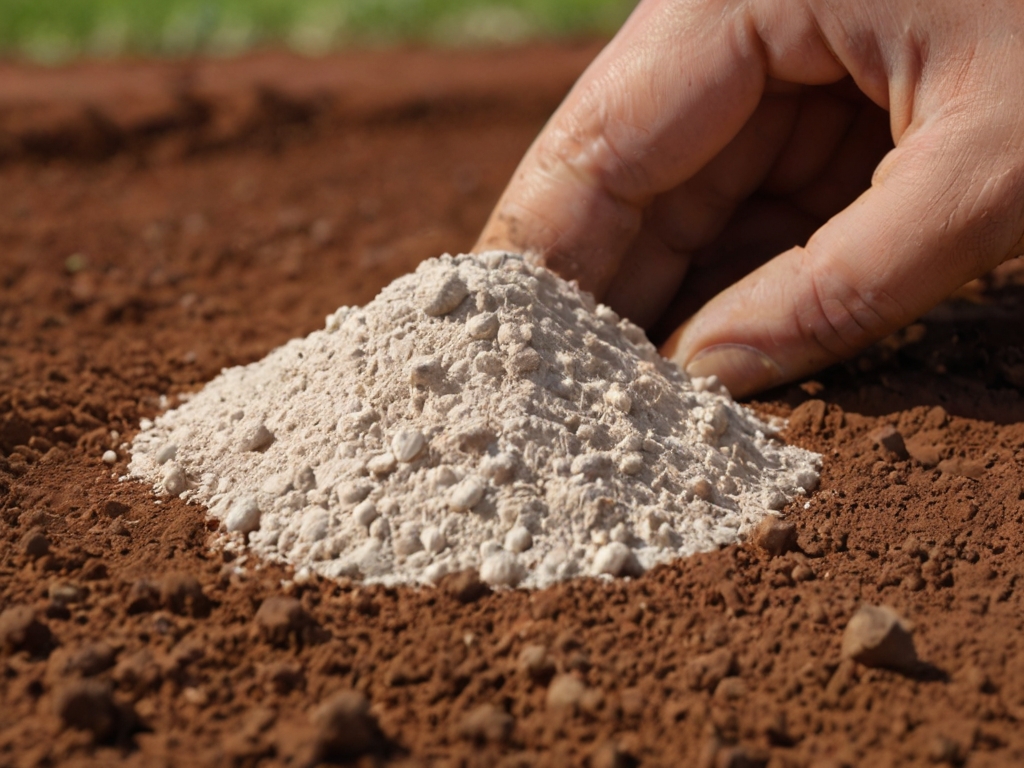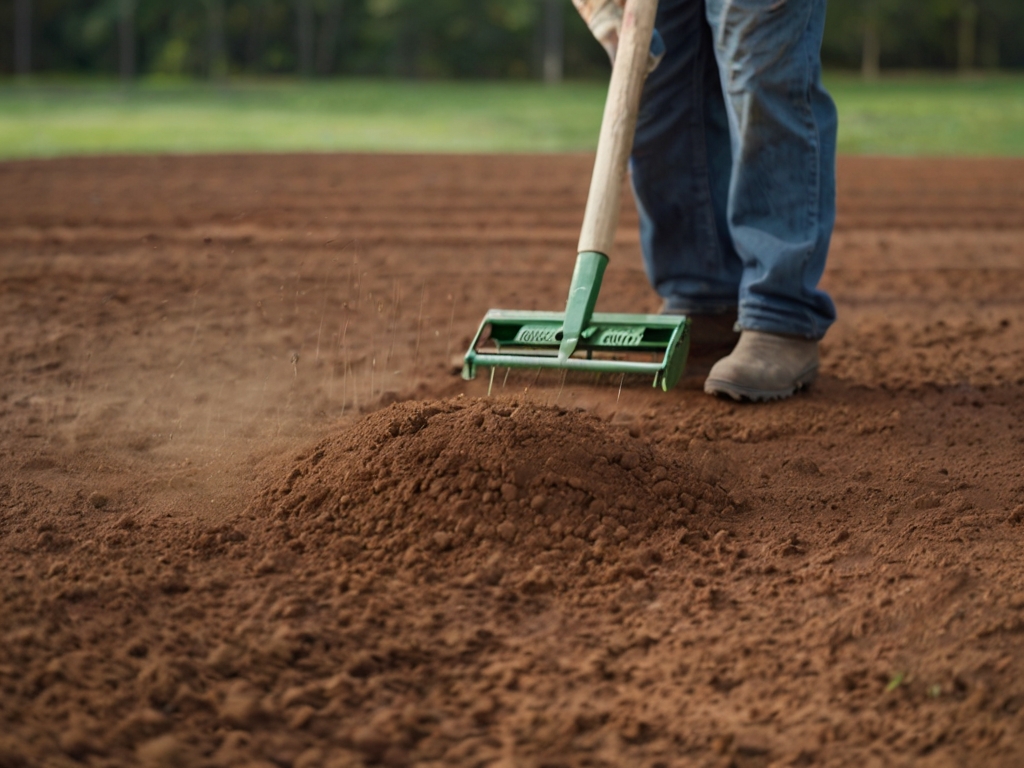When it comes to gardening and landscaping, soil quality plays a crucial role in the success of your plants. Clay soil, in particular, can present several challenges due to its dense and compact nature. However, there is a solution that can help improve the structure and fertility of clay soil – liquid gypsum. In this article, we will explore the benefits of using liquid gypsum for clay soil, how it works, and how to apply it effectively.
Table of Contents
- Benefits of Liquid Gypsum for Clay Soil
- How Liquid Gypsum Works as a Soil Amendment: The Science
- Comparing Liquid Gypsum to Traditional Gypsum
- How to Apply Liquid Gypsum to Clay Soil
- Tips for Maximizing the Effectiveness of Liquid Gypsum
- Liquid Gypsum vs. Other Soil Amendments for Clay Soil
- Improving Your Soil with Liquid Gypsum and Clay Buster
Benefits of Liquid Gypsum for Clay Soil
Liquid gypsum offers a range of benefits when used as a soil amendment for clay soil.
Breaks Up Compacted Clay Soil
Firstly, it helps improve the soil’s structure by breaking up compacted clay particles. This allows for better drainage and aeration, creating an environment more conducive to root growth. By improving the soil structure, liquid gypsum also helps prevent waterlogging and reduce the risk of soil erosion.
Enhances Nutrient Availability
In addition to improving soil structure, liquid gypsum also enhances nutrient availability. It works by replacing sodium ions in the soil with calcium ions, which helps neutralize the clay soil’s high pH level. This process, known as flocculation, allows for better nutrient uptake by plant roots. As a result, plants can access the essential nutrients they need for healthy growth.
Improves Water Retention
Furthermore, liquid gypsum can help improve water retention in clay soil. Breaking up compacted clay particles creates channels and pore spaces that allow water to infiltrate more easily. This helps prevent water runoff and allows the soil to retain moisture for longer. Improved water retention is especially beneficial during dry periods when plants struggle to access sufficient water.
How Liquid Gypsum Works as a Soil Amendment: The Science
Liquid gypsum utilizes the chemical properties of calcium and sulfur to improve clay soil. When applied to the soil, liquid gypsum reacts with the clay particles and replaces sodium ions with calcium ions. This process is known as ion exchange and helps to neutralize the high pH level of clay soil.
The replacement of sodium ions with calcium ions has several benefits:
- It helps to break up compacted clay particles, improving soil structure and allowing for better drainage and aeration.
- It helps to reduce the risk of nutrient deficiencies by making essential nutrients available to plant roots.
- It helps to improve water retention by creating channels and pore spaces that allow water to infiltrate more easily.
Comparing Liquid Gypsum to Traditional Gypsum
Traditional gypsum, or powdered or agricultural gypsum, is another commonly used soil amendment for clay soil. It is a finely ground form of calcium sulfate typically spread over the soil surface and incorporated into the top few inches of soil. While both liquid and traditional gypsum have similar benefits for clay soil, some key differences exist.
Ease of Application
One advantage of liquid gypsum is its ease of application. It can be applied directly to the soil using a sprayer or irrigation system, making it a convenient option for large areas. Traditional gypsum, on the other hand, requires manual spreading and incorporation into the soil, which can be more labor-intensive.
Ability to Penetrate
Another advantage of liquid gypsum is its ability to penetrate deep into the soil profile. The liquid form allows for better distribution and infiltration into the clay particles, resulting in more effective results. On the other hand, traditional gypsum may not penetrate as deeply into the soil and may take longer to break down and release its nutrients.
However, traditional gypsum does have its advantages as well. It is often more cost-effective than liquid gypsum, especially for larger areas. Additionally, traditional gypsum can be applied at any time of the year, whereas liquid gypsum may be more effective during active plant growth periods.
How to Apply Liquid Gypsum to Clay Soil

Applying liquid gypsum to clay soil is a relatively straightforward process. Here is a step-by-step guide on how to do it effectively:
1. Test your soil: Before applying liquid gypsum, it is recommended to test your soil pH and nutrient levels. This will help you determine the appropriate amount of liquid gypsum to apply.
2. Prepare the soil: Remove any weeds or debris from the area where you plan to apply the liquid gypsum. Loosen the soil surface using a garden fork or tiller to ensure good contact between the liquid gypsum and the soil.
3. Dilute the liquid gypsum: Follow the instructions on the product label to determine the appropriate dilution rate for your specific soil conditions. Mix the liquid gypsum with water in a sprayer or irrigation system according to the recommended ratio.
4. Apply the liquid gypsum: Spray the diluted liquid gypsum evenly over the soil surface, covering the entire area. If using an irrigation system, apply the liquid gypsum during a watering cycle to ensure even distribution.
5. Water the soil: After applying the liquid gypsum, thoroughly water the soil to help it penetrate the clay particles. This will help activate the chemical reactions and promote better soil structure.
6. Monitor and reapply if necessary: Monitor your soil conditions and plant growth over time. If you notice that the clay soil is still compacted or that nutrient deficiencies persist, you may need to reapply the liquid gypsum after a few months.
Tips for Maximizing the Effectiveness of Liquid Gypsum

To get the most out of liquid gypsum as a soil amendment for clay soil, here are some additional tips:
1. Consider soil pH: Liquid gypsum is most effective in soils above 7. If your soil pH is below this range, you may need to adjust it before applying liquid gypsum. This can be done by adding lime to raise the pH or sulfur to lower the pH.
2. Apply during active plant growth: Liquid gypsum is most effective when applied during periods of active plant growth. This is when plants have a higher demand for nutrients and are more likely to benefit from improved soil structure and nutrient availability.
3. Consider temperature and moisture conditions: Liquid gypsum works best when applied to moist soil. If your clay soil is dry, consider watering it before applying the liquid gypsum. Additionally, avoid applying liquid gypsum during extreme temperatures, which can affect its effectiveness.
4. Follow recommended application rates: Following the recommended application rates for liquid gypsum is important to avoid over-application. Applying too much liquid gypsum can lead to nutrient imbalances and other issues. Always read and follow the instructions on the product label.
Liquid Gypsum vs. Other Soil Amendments for Clay Soil
While liquid gypsum and Clay Buster are effective soil amendments for clay soil, other options are also available. Here is a comparison of liquid gypsum to other commonly used soil amendments for clay soil:
1. Sand: Adding sand to clay soil is a common practice to improve drainage and reduce compaction. However, it is important to note that more than adding sand alone may be required to improve clay soil structure. Sand particles are larger than clay particles and can create a dense layer restricting water movement.
2. Compost: Adding compost to clay soil can help improve its structure and fertility. Compost contains organic matter that helps bind clay particles together and create aggregates. It also adds nutrients to the soil and promotes beneficial microbial activity.
3. Organic matter: Incorporating organic matter such as leaf mulch or straw into clay soil can help improve its structure and water-holding capacity. Organic matter helps create pore spaces in the soil, allowing for better drainage and aeration. It also adds nutrients to the soil and promotes microbial activity.
While these options can effectively improve clay soil, liquid gypsum, and Clay Buster may provide different benefits. Liquid gypsum and Clay Buster work together to address the specific challenges of clay soil, such as compaction, nutrient availability, and water retention. They provide a comprehensive solution that can help transform clay soil into a healthy and productive growing environment.
Improving Your Soil with Liquid Gypsum and Clay Buster
In conclusion, liquid gypsum offers a range of benefits when used as soil amendments for clay soil. It helps improve soil structure, enhances nutrient availability, and promotes better water retention. When applying liquid gypsum to clay soil, following the recommended application rates and considering factors such as soil pH, temperature, and moisture conditions is important. Additionally, incorporating organic matter and other soil amendments can further enhance the benefits of liquid gypsum and Clay Buster.
So, if you’re struggling with clay soil in your garden or landscaping projects, consider giving liquid gypsum and Clay Buster a try. They can improve soil structure, enhance nutrient availability, and promote better water retention, helping transform your clay soil into a thriving environment for plants. Don’t let the challenges of clay soil hold you back—take action and see the results for yourself!

